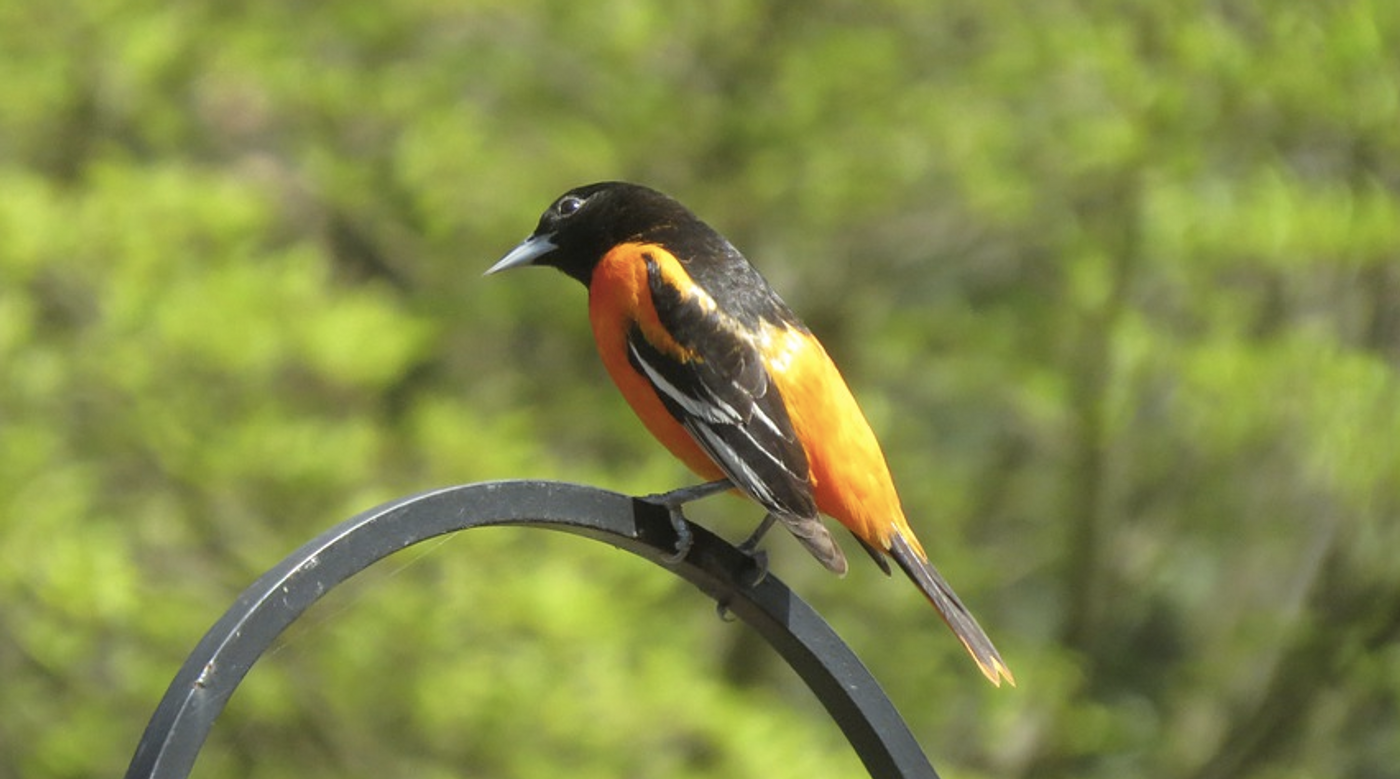Bullock's & Baltimore Orioles May Mix, But They Won't Merge
Researchers have data that can finally settle a long controversy in the birding world. The ranges of two orioles, the Bullock's Oriole, (of western North America), and the Baltimore Oriole (of eastern North America), meet in the Great Plains. The species mix there and can produce offspring that seem to be healthy hybrids. Scientists at Cornell University have now shown that hybridization will not, however, lead to the establishment of a new, merged species, and the parent species will stay separated. The findings have been reported in The Auk. The gif below by Megan Bishop and Jillian Ditner of the Cornell Lab of Ornithology illustrates these birds.
"The debate over whether Bullock's and Baltimore Orioles are one species or two goes to the very heart of what defines a species," said the lead study author Jennifer Walsh, a postdoctoral researcher at Cornell. "For a long time, that definition included the inability of one species to reproduce with any other. Bullock's and Baltimore Orioles clearly can mate where their ranges overlap in the hybrid zone, but that's not the whole story."
A Baltimore Sun article from 1995 announced that Baltimore had gotten its Oriole back. It reported that in 1973, the American Ornithologists Union had reclassified the Baltimore Oriole and the Bullock's Oriole as one species: the Northern Oriole, because they had mixed extensively. However, the parent species had retained their habitats, songs, and plumage. The Union reversed course in 1995 and declared them separate species once again.
This work shows that was the correct decision; these are very different birds. A genetic assessment showed that the area in which the species mix, the so-called hybridization zone, is also shrinking. The researchers noted that if hybridization was to the birds' biological advantage, the zone would have been expanding, and more genes from the parent species would be mixing. Natural selection is limiting these events instead, discouraging the homogenization of the two birds.
"I call hybrid zones the 'supercolliders of speciation,'" said study co-author Irby Lovette, director of the Lab's Fuller Evolutionary Biology Program. "Through these special matings, genes and traits are mixing and matching in new combinations--all of which helps us learn more about where biodiversity comes from, and therefore how new species arise."
There are other hybridization zones for different birds in the United States. It's thought that about ten percent of the world's bird species hybridize, but they don't all follow the same patterns. For example, Blue-winged- and Golden-winged Warblers have undergone so much hybridization they could be merging their species.
"We're learning that hybrid zones are really very dynamic, shifting and changing over time," said study co-author Shawn Billerman. "That aspect of hybrid zones has become recognized as common and widespread in the past ten to twenty years with the rapid improvement in genetic sequencing."
The scientists want to find out more about why hybridization between the Orioles is limited, and plan to sequence both the Bullock's and Baltimore Oriole's genomes to learn more about the genetic factors.
Sources: AAAS/Eurekalert! via Cornell University, The Auk: Ornithological Advances









